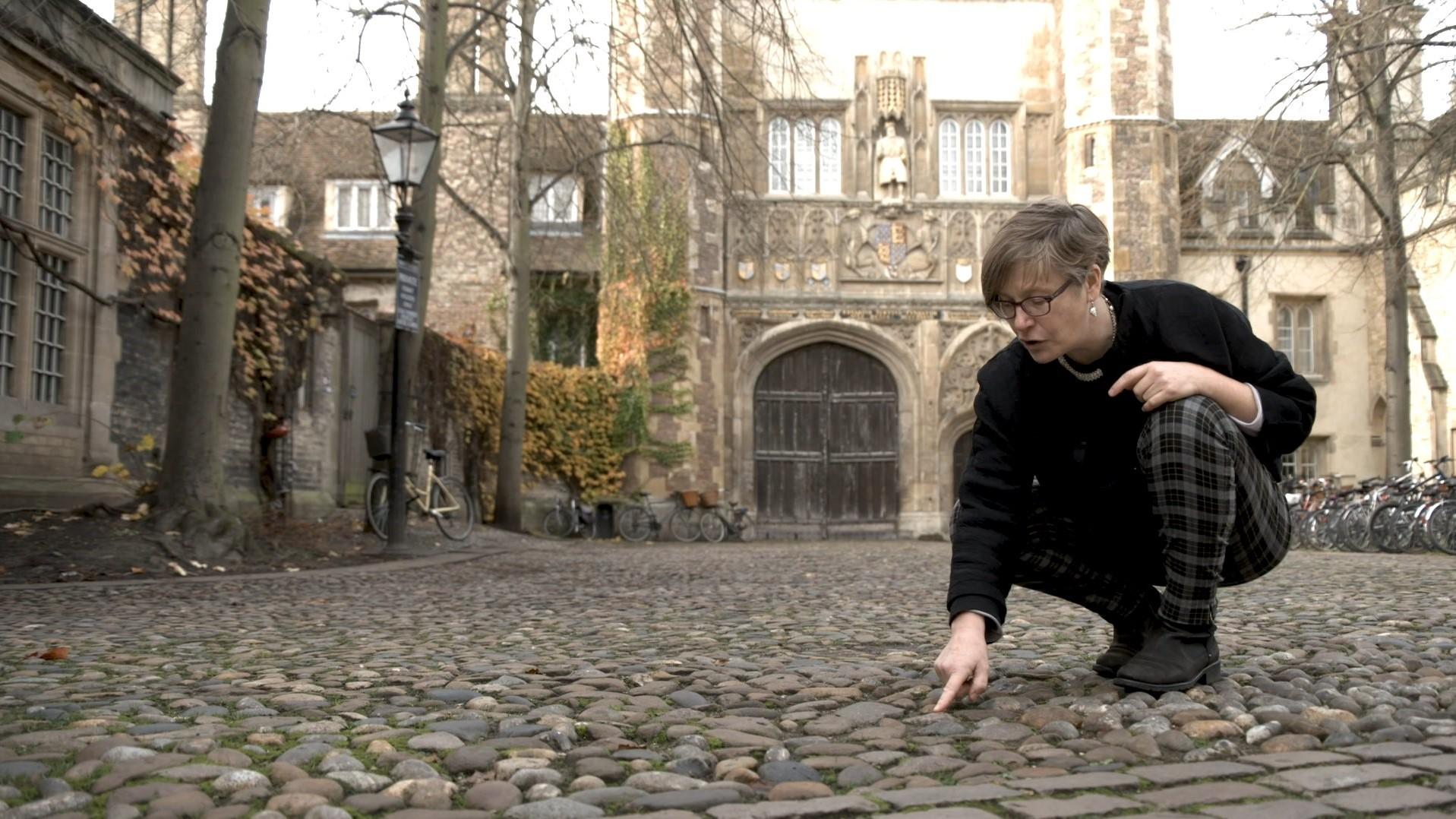
Submitted by Dr C.M. Martin-Jones on Wed, 01/06/2022 - 10:12
We often admire Cambridge’s historic buildings and beautiful views. But we should also look down at what lies beneath our feet, according to Marian Holness, Professor in Earth Sciences and Trinity College Fellow.
And nowhere more so than the cobbles in front of Trinity’s Great Gate. To the untrained eye they might look like boring brown stones, but they are a remarkable geological time capsule.
Laid out when Great Gate was built in 1547, and worn flat by cartwheels and horses hooves, the cobbles are a medley of flint, igneous rocks including basalt and granite, and metamorphic rocks. Perhaps one of the most striking is an exotic reddish-brown and speckled rhomb porphyry.
The flints might be local, but the other cobbles are from places hundreds of miles away from Cambridge, says Professor Holness.
“The nearest metamorphic rocks like this are in Scotland, the nearest basalts are in the Lake District and the rhomb porphyry – a very rare rock type – is only found in Antarctica, East Africa and in Norway, near Oslo.”
So the big question is how this material made its way to the Cambridge region all jumbled together for easy collection by the road builders.
Road builders of the sixteenth century wouldn’t have known their origins, but by the nineteenth century Cambridge scientists had discovered where and how these stones ended up in Cambridge.
There are clues in the triangular shape of many of the cobbles and the presence of the rhomb porphyry. “Triangular rock fragments are characteristic of those transported by a glacier. The rhomb porphyry is so localised to the Oslo region that if we find a rhomb porphyry cobble elsewhere in Europe, we know the ice must have flowed from Oslo to near where the cobble was found,” says Professor Holness.
The cobbles at Great Gate date from the greatest of the recent Ice Ages, 480,000 years ago, when much of northern Europe was covered in ice and the sea level was 120 metres lower than today.
The builders of that ancient road chose their materials carefully, says Professor Holness. “They collected the cobbles from the fields nearby, and used only the types of cobbles which could withstand the metalled hooves of horses and carts, unlike softer sandstone and limestone which they used for buildings.”
The deposits of glacial material in the Cambridge area, as typified by the Great Gate cobbles, have been very important in helping scientists to map the course and extent of ice sheets. But geology is also vital for the present and future, says Professor Holness.
“Geology is vitally important to us right now, as it gives us the window back into Deep Time and tells us how the climate has changed over the last 4.55 billion years. This information is essential if we are to understand what humans are doing to the climate now.”
Adapted from a Trinity College news story
